Arbaer Open Air Museum Travel Guide

Arbaejarsafn is an open-air museum in Reykjavik. It features multiple traditional Icelandic houses from different time periods and interesting exhibitions about Icelandic history. This Arbaer Open Air Museum is part of the Reykjavik City Museum Collective.
The Arbaer Open Air Museum, known in Icelandic as "Árbæjarsafn," is one of the best museums for exploring Iceland’s cultural heritage. It's located in Reykjavik and offers visitors a unique experience, showcasing traditional Icelandic buildings, artifacts, and daily life from earlier centuries. It’s an excellent destination for those interested in learning about Iceland's history in an interactive and engaging way.
The most convenient way to visit the Arbaejarsafn museum is by renting a car, but you can also get there by city bus. The museum is a 15-minute drive from the city center and is easy to reach from many Reykjavik accommodations.
Arbaejarsafn is part of the Reykjavik City Museum, a collective of different attractions dedicated to aspects of Icelandic history and culture. They're some of the best museums and exhibitions in Iceland, and well worth a visit. If multiple museums catch your interest, you can get a 24-hour Reykjavik City Card, which includes entry to great museums, galleries, and more.
What to See at the Arbaejarsafn Open Air Museum
 The idea of opening an Icelandic open-air museum can be traced back to 1942 after local concerns grew that "Old Reykjavik" was beginning to disappear amidst modern development. However, even though the idea received a positive response at the time, it wasn't until 15 years later that it became a reality.
The idea of opening an Icelandic open-air museum can be traced back to 1942 after local concerns grew that "Old Reykjavik" was beginning to disappear amidst modern development. However, even though the idea received a positive response at the time, it wasn't until 15 years later that it became a reality.
The historic farmstead, Arbaer, was chosen as the designated location for the museum, which was officially founded in 1957. Today, the Arbaer Museum resembles a historical village, with over twenty different authentic buildings in which to explore, including the original Arbaer farm, pictured above!
One of the main attractions at Arbaejarsafn is the traditional turf houses, which showcase how Icelanders lived in earlier centuries. These houses are built from natural materials like wood, stone, and turf, offering insight into Iceland’s resourceful architecture. You'll also see the traditional wooden houses that came to replace these turf buildings at the end of the 19th century.
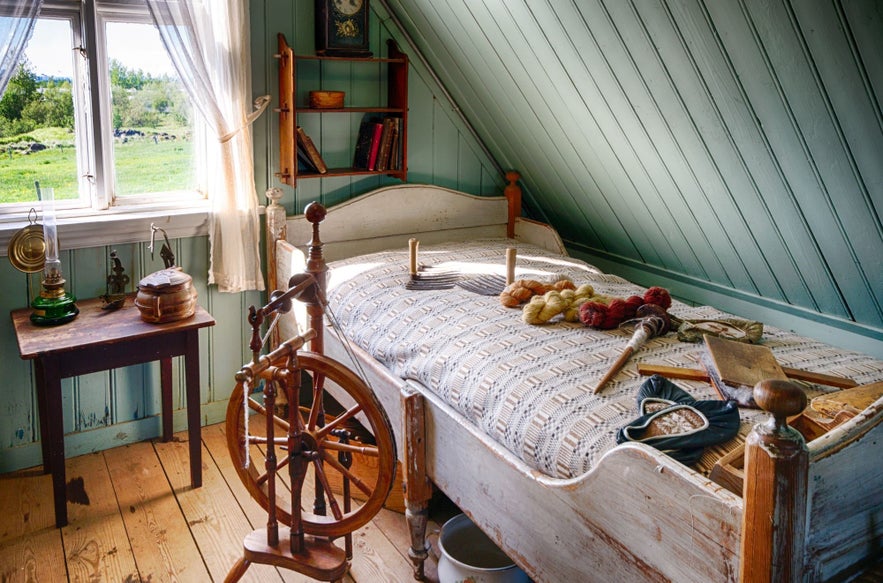
You'll see furnished homes and items from different periods.
The Arbaer Museum features a reconstructed village with homes, a blacksmith's workshop, and a general store from the early 20th century. You can walk through these buildings to see authentic furniture, tools, and everyday items used by Icelanders in the past.
Each building is carefully furnished with period-appropriate items. You'll see wooden furniture, woven textiles, and everyday tools in the homes, giving a sense of what daily life was like, both at different times and for different social classes.

Find souvenirs, candy, and treats at the charming Arbaejarsafn corner store!
Some of the buildings house interesting exhibitions that cover different aspects of Iceland's history. You'll find both temporary exhibits and long-standing ones which are all worth taking time to explore.
For example, "Consumption – Reykjavik in the 20th century" is an exhibition that explores the evolution of consumer culture in Iceland. You can see how shopping habits and product availability have changed over time, from traditional local goods to imported products.
The exhibition showcases a variety of items, including vintage advertisements, packaging, and household appliances, providing a glimpse into the country's economic and social development in an interesting way.
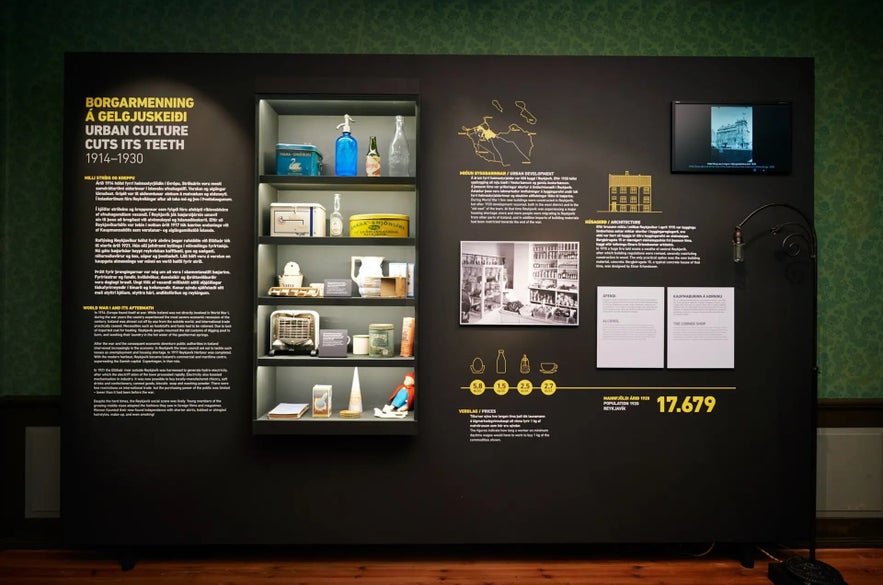 Another notable exhibition is "Come and Play!" which focuses on children's play and leisure activities. The exhibition features interactive displays, games, and toys from different eras, allowing visitors to experience firsthand how children have played and learned over the centuries.
Another notable exhibition is "Come and Play!" which focuses on children's play and leisure activities. The exhibition features interactive displays, games, and toys from different eras, allowing visitors to experience firsthand how children have played and learned over the centuries.
 There are more exhibits to see, and it's easy to spend a day at the Arbaejarsafn museum. With its diverse range of buildings and displays, the museum offers an immersive look at Iceland’s history, from rural life in turf houses to the evolving urban landscape of Reykjavik. With so much to explore, it's a must-visit destination for anyone who wants to get to know Icelandic history.
There are more exhibits to see, and it's easy to spend a day at the Arbaejarsafn museum. With its diverse range of buildings and displays, the museum offers an immersive look at Iceland’s history, from rural life in turf houses to the evolving urban landscape of Reykjavik. With so much to explore, it's a must-visit destination for anyone who wants to get to know Icelandic history.
Events at the Arbaer Museum
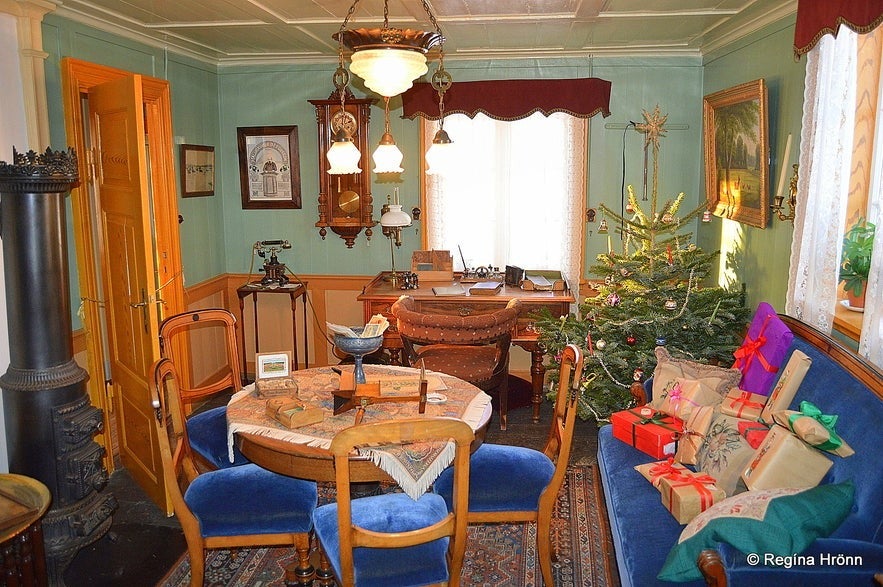
Photo from Regína Hrönn. Christmas in an upper-class family home at the Arbaejarsafn Museum.
Arbaejarsafn Open Air Museum is well known for its cultural events that celebrate Icelandic traditions and history. One of the most popular events is the Christmas program, where the museum transforms into a winter wonderland with traditional Icelandic decorations, crafts, and live demonstrations of historic holiday customs. If you're planning a winter trip to Iceland, keep this in mind as you can experience how Icelanders celebrated Christmas in the past with festive activities for the whole family.
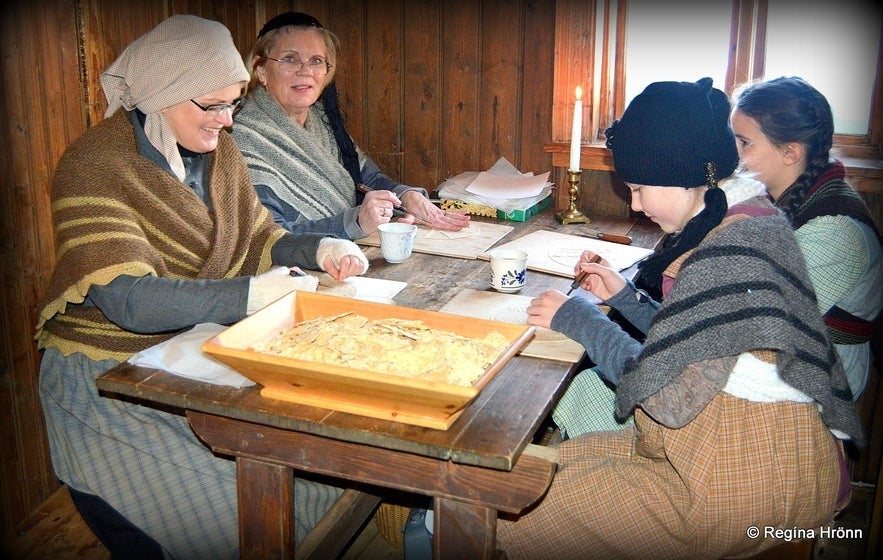
Photo from Regína Hrönn. Christmas"laufabrauð" leaf bread making at the Arbaer Open Air Museum.
The Arbaer Museum also hosts events on national celebrations throughout the year, such as on Iceland’s National Day on June 17th, a celebration of Icelandic independence. During this day, the museum comes alive with traditional costumes, music, dancing, and games, offering visitors a lively look into Iceland's cultural heritage.
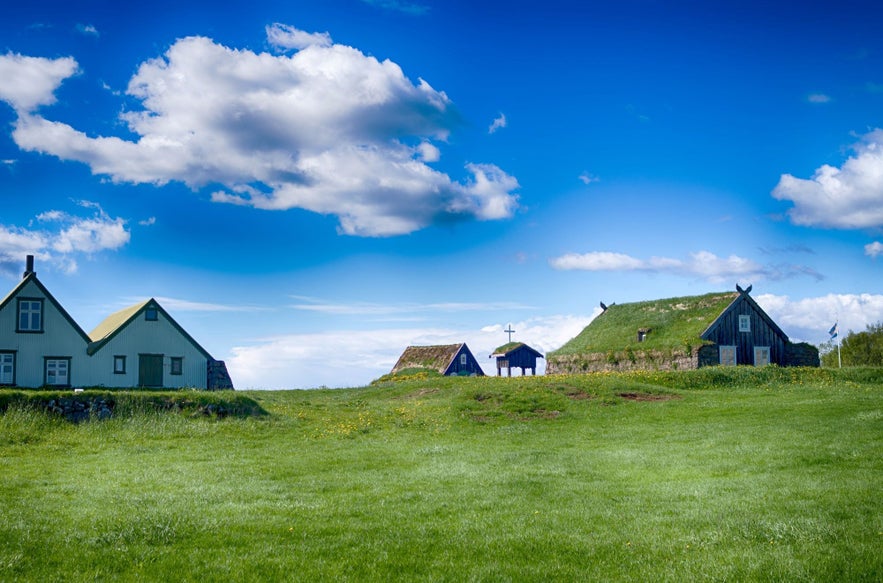
The original Arbaer farm is next to a historic turf church, which is a popular location for events like weddings and christenings.
These events provide a rich, hands-on experience of Icelandic customs. It's an opportunity to participate in and connect with Icelandic culture in an interactive and engaging setting!
During your time in Iceland, keep an eye on the event calendar of the Reykjavik City Museum, as you may be lucky enough to visit the Arbaer Museum during an event. It's a great time to visit as everything will be filled with life and fun activities.
How to Go to the Arbaer Museum
 Arbaejarsafn Open Air Museum is located in Reykjavik, making it easily accessible. If you've booked a Reykjavik rental car, the museum is a short 15-minute drive from the city center, with free parking available on-site.
Arbaejarsafn Open Air Museum is located in Reykjavik, making it easily accessible. If you've booked a Reykjavik rental car, the museum is a short 15-minute drive from the city center, with free parking available on-site.
If you prefer taking public transportation during your visit, several bus routes connect to the Arbaer Museum, including the number 5, 6, and 16 buses, which you can catch in downtown Reykjavik.
Other Reykjavik City Museums
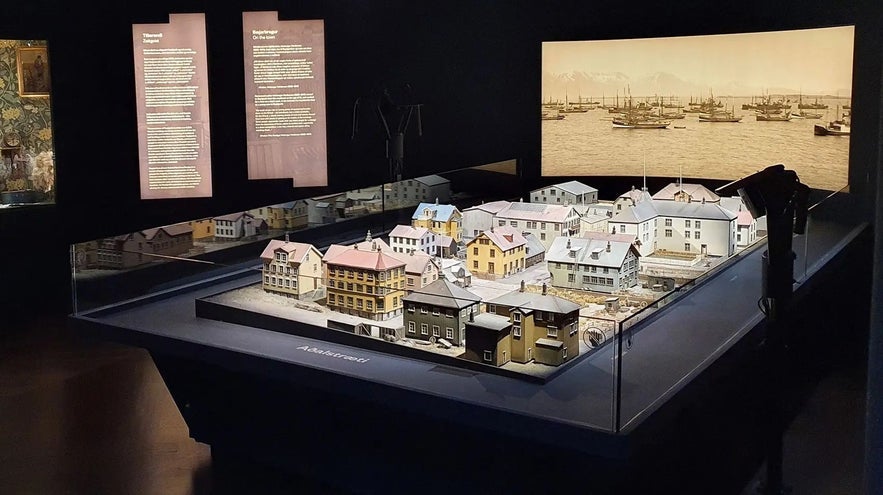
Photo from the Adalstraeti and Settlement Exhibition - Reykjavik City Museum
In addition to the Arbaejarsafn Open Air Museum, the Reykjavik City Museum Collective includes several other fascinating locations that offer a deeper look into Iceland’s history and culture.
The Adaldstraeti and Settlement Exhibition showcases the earliest evidence of human habitation in Reykjavik, dating back to around 871 AD, and how the city developed until the 20th century. You can explore an excavated Viking longhouse alongside interactive displays that provide insight into the interesting history of Iceland's capital city.
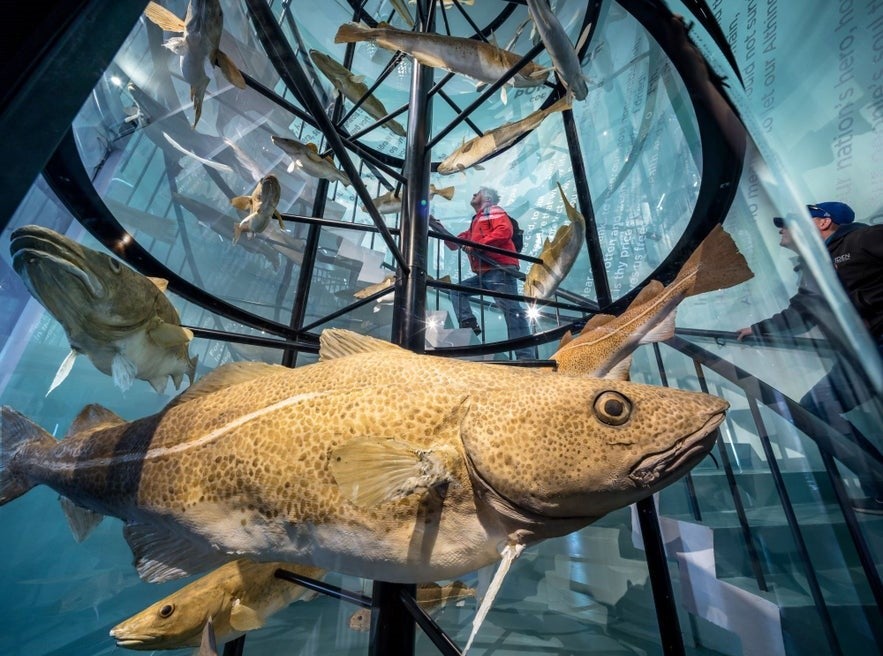 The Reykjavik Maritime Museum is another popular location, highlighting Iceland’s deep connection to the sea. It's located by the harbor of the Grandi area, and it presents the history of the country’s fishing industry.
The Reykjavik Maritime Museum is another popular location, highlighting Iceland’s deep connection to the sea. It's located by the harbor of the Grandi area, and it presents the history of the country’s fishing industry.
For a different museum experience, the Reykjavik Museum of Photography offers a rich collection of historical and contemporary Icelandic photography. Its exhibitions focus on both the art and documentary aspects of photography, and there's always something new to see.
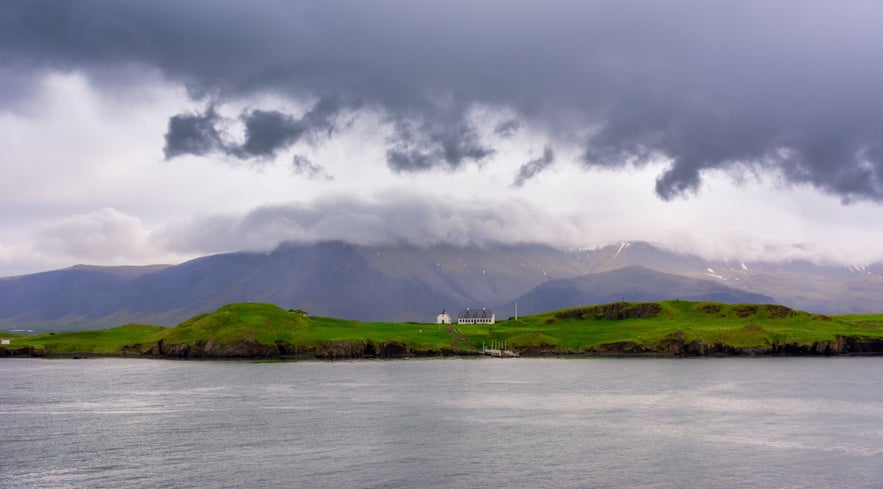 Finally, the historic sites on Videy island are a short ferry ride from Reykjavik. It has diverse natural sites and the historic Videyjarstofa, one of the oldest houses in Iceland. It's also the location of the Imagine Peace Tower memorial by Yoko Ono.
Finally, the historic sites on Videy island are a short ferry ride from Reykjavik. It has diverse natural sites and the historic Videyjarstofa, one of the oldest houses in Iceland. It's also the location of the Imagine Peace Tower memorial by Yoko Ono.
These locations are all part of the Reykjavik City Museum Collective, but there are plenty of other interesting museums to visit. Don't miss out on the National Museum of Iceland and the National Gallery of Iceland. All of these locations will provide interesting insight into different aspects of Icelandic history and culture!
Attractions Nearby
Popular categories

Download Iceland’s biggest travel marketplace to your phone to manage your entire trip in one place
Scan this QR code with your phone camera and press the link that appears to add Iceland’s biggest travel marketplace into your pocket. Enter your phone number or email address to receive an SMS or email with the download link.


















